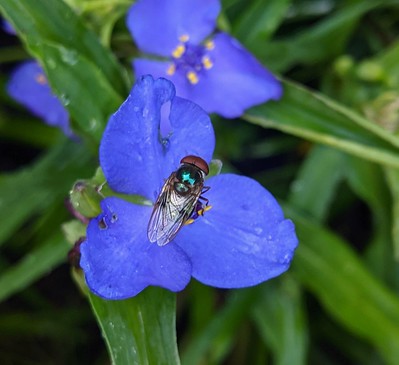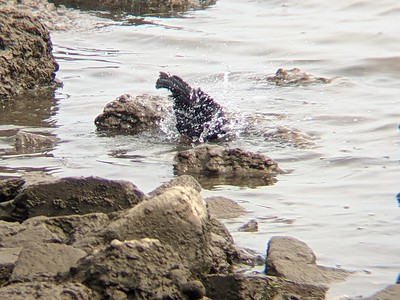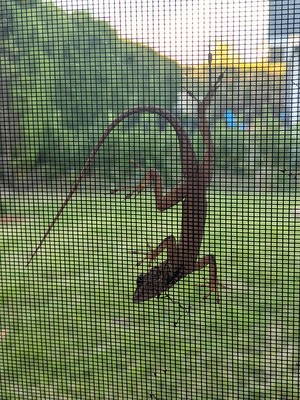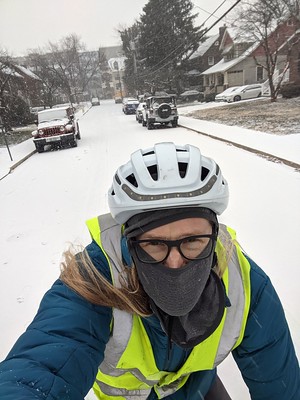
Happy New Year!
I hope you got some time off of work and managed to stay healthy, whatever the end of the year was like for you.
As usual, I'm kicking the new year off by providing summaries for my favorite 15 articles of 2021, so that if you missed any of them you get another chance to check them out.
Also, this isn't a science article per se, but I helped to plan two webinars in 2021 with different experts providing their insights on how to best improve the impact of research (building on my 2020 paper on this topic), and I learned a ton from both. I hosted the first one (https://vimeo.com/506194985), and my colleague Peter Edwards hosted the next one (focused on Latin America, the Caribbean, and African contexts, https://vimeo.com/617423733). I've added links to the videos on this blog post where I've been collecting some related resources on the topic: http://impactblog.sciencejon.com/
If you know someone who wants to sign up to receive these summaries, they can do so at http://bit.ly/sciencejon. Here are the papers in alphabetical order (by author):
Barnes et al. 2018 highlights the downside of area targets: they may drive siting protected areas (PAs) in bad places and poor enforcement / management. They promote a shift to outcome-based protected area targets (meaning the targets are about biodiversity gains or avoided losses), emphasizing representation and connectivity, and building the evidence base for which factors affect how well PAs deliver conservation outcomes.
Dieckman et al. 2021 surveyed people about how important different social and cultural issues were to government decision makers vs. the general public. Respondents thought that government decision makers care the most about economic aspects, but that the public cares more about other social and cultural aspects. More tangible impacts (like water quality and physical safety) were perceived to be more important than intangible ones (like emotional health and local practices). Interestingly, biodiversity had the lowest perceived support second only to native culture.
Dobrowski et al. 2021 analyzes how much of the world will experience enough climate change to effectively shift into a different ecoregion, and how that relates to protected areas (PAs). They move ecoregions' location to keep their historic climate similar, which is an interesting thought exercise but not a likely scenario (given variations in soil and topography and other factors that will not shift w/ climate). They found that with 2C warming, 54% of land will effectively change ecoregions, with 22% shifting biomes (see Fig 4 for how this affects % protected by biome). This means there are winners and losers, with the biggest losers the ~5% of land within PAs that don't have an analogous climate w/in 2000 km for species to migrate to (shown in black in Figs 2b & 3b; 56 ecoregions 'disappear'). They recommend a focus on unmodified areas expected to be climatically stable that are currently underprotected, as well as areas that improve climate connectivity (see Fig 6 for a case study in the NW US and Canada). They also have a tool where you choose a place, and it'll tell you what other place currently has the climate the first place is expected to have w 2C (or 4C) warming: https://plus2c.org/
Ellis et al. 2021 argue that protecting untouched or unmodified habitat from people is a fundamentally flawed framing, b/c most habitat on earth has been to some degree inhabited by (and modified by) people for thousands of years). It's a good point that what we consider 'natural' is subjective and arbitrary (e.g. the grasslands of the Midwestern U.S. are a result of thousands of years of intentionally set fires and other impacts by Indigenous people), and modified ecosystems may have higher species richness or other metrics. They have great data on how much habitats and land use have changed over time (check out all the figures for that), and make an excellent case about how wrong it is to depict human use of nature as a recent despoiling of human-free places. They further argue that current biodiversity losses come from "the appropriation, colonization, and intensifying use of the biodiverse cultural landscapes long shaped and sustained by prior societies" and that the solution lies in empowering the stewardship of Indigenous people and local communities. I agree that opinions about which kind of ecosystem and land use is "good" are subjective, that there are good social and human rights reasons to support local autonomy, and that typically local and Indigenous people use natural areas in a way more compatible with biodiversity than how people from elsewhere tend to. I think it's also worth recognizing that even Indigenous people have consistently caused some extinctions (of large mammals in particular) when they first arrived to actually uninhabited ecosystems, and that in some cases they currently support the same kind of intensification associated with colonialism. So local autonomy will not always be a recipe for maintaining ecosystems more or less as they currently are, although there are plenty of valid opinions about which human and ecosystem outcomes conservation organizations should work to support. I'd definitely recommend reading the paper, and I realize I have a lot of listening and learning to do on the subject of Indigenous-led conservation.
Evans et al. 2021 estimated how to reduce greenhouse gases (GHGs) by raising water levels in peatlands which have been drained for agriculture. They found raising the water table by 10cm (re-wetting the peat) reduces net greenhouse gases (GHGs) by an average of 3 t CO2e/yr until it rises to a depth 30cm, from 30cm-8cm rising methane results in smaller net GHG benefits, and <8cm GHGs become net positive (see Fig 1). Cutting the water table depth in half globally (raising it to an average of 45cm in croplands and 25cm in grasslands) would cut emissions from drained peat by about 2/3 (from 786 Mt [aka MMT] CO2e/yr to 278 MT CO2e/yr). These are conservative estimates (leaving out N2O and reduced emissions from avoided deep fires), although the range of those estimates is huge (see Table 1). Alternatively re-wetting all peat up to 10cm would eliminate almost all peat emissions and likely even drive them slightly negative (15 Mt CO2e/yr). However, cutting water table depth in half would flood part of the root zone for most crops and regions, which would reduce yield. But raising the water table to just below the root zone could have big GHG benefits and potentially even improve crop resilience to drought. This is a big opportunity!
Grantham et al. 2020 estimates how much forests have been fragmented and modified around the world. They look at proximity to infrastructure, agriculture, and tree cover loss, along with lost forest connectivity, to estimate forest modification. The way they defined modification means that only forests in the most remote and sparsely populated areas are scored as having high landscape integrity (see figure 2 and figure 4), although this was still ~40% of global forest area. They find 56% of protected forests have high landscape-level integrity (table 2). I agree with the authors that forest modification and degradation is important, but I don't think the authors made a good case that a) their findings are new / surprising, or that b) just mapping proximity to people is a great way to estimate ecological degradation let alone prioritize conservation action. It's true that being farther from people is generally helpful to forests, but the flip side is that this paper heavily devalues the natural areas that people most appreciate for recreation and ecosystem services, even though with high ecological function. It also ignores the contribution people can make to good stewardship and management.
Guadagno et al. 2021 is an an excellent new report from the Wildlife Conservation Society (as part of the Failure Factors Initiative) looking at the experience of conservation NGOs with using “pause and reflect” sessions to learn from failure (and success). Here are my key take-aways:
- People are reticent to talk publicly about failure for fear of losing respect, status and support for their work.
- Documenting “lessons learned” in reports is not as important as staff going through the process of talking together and informally learning from each other.
- Regularly reflecting on both what is working well and what could be improved (even for minor things, and for both successes and failures) makes teams better equipped to respond to serious or major failures (see Example 4 on p14). Having already built both trust and familiarity with a healthy way to learn from failure is excellent preparation when crises arise, allowing the group to work together to pivot effectively. These sessions don't have to take much time.
- Those regular reflections work best when there is high psychological safety (be respectful, focus on what happened and what to do next time and not who is to blame, recognize and address bias) and they are structured around a few core questions (what did we expect to happen vs. what happened, what went well and why, what can be improved and how). See page 21-25 for recommendations on how to do this, as well as guides / questions you can use.
- Sometimes a failure looks like a success at first, and in these reflections you can look for other explanations for apparent success (as per Example 1 on p7) allowing you to identify hidden problems and resolve them.
- Other times, a failure is at least partially a success, and these sessions can also identify some aspects of work going well even when we don’t achieve the outcomes we hoped for (see Example 2 on p11). Also even successes can probably be improved! (see Example 3 on p13).
The 2021 IPCC report had a lot of useful information! https://www.ipcc.ch/report/ar6/wg1/ Don't feel like reading 1,800 pages or even the 90 page summary or 215 page FAQ? Check out the 2 page 'headline statements' here: https://www.ipcc.ch/report/ar6/wg1/downloads/report/IPCC_AR6_WGI_Headline_Statements.pdf
The one thing to highlight for me is that limiting warming to 1.5C is now harder but not impossible (requiring net zero by 2055 w/ 90% gross emissions reductions). Current policies agreed to under Paris would still lead to 3C warming by 2100. One finding that I read about in this New York Times article (https://www.nytimes.com/2021/08/09/climate/climate-change-report-ipcc-un.html) really struck me: a bad heat wave that used to happen every ~50 years is now happening every ~10 years, and will happen every ~5 years at 1.5C or nearly annually at 4C. Don't miss this interactive tool to explore the results (and note you can download spatial data via the "share" icon): https://interactive-atlas.ipcc.ch/
Jenkins et al. 2015 highlights an inconvenient truth about protected areas in the United States: they are mostly located in places with relatively low species richness and threats of conversion. In other words, if the main goal of protected areas is to prevent as many species as possible from going extinct, they're poorly sited. You can compare biodiversity maps in Fig 1 & 2 to PAs in Fig 3 to see the mismatch. Fig 4 has their recommendations for 9 areas where conservation should be focused in the SE and West coast.
The findings of Leal et al. 2020 may seem obvious, but they're important to highlight: conservation planning focused on terrestrial species only does a poor job at protecting freshwater biodiversity. They did some modeling in Brazil to look at trade-offs between freshwater and terrestrial species, and how to improve planning. Their low-bar recommendation is that even without data on freshwater biodiversity, just considering aquatic connectivity in additional to terrestrial species roughly doubles the benefit to freshwater species with almost no decrease in terrestrial benefits (Fig 3e & 3f, purple lines). If planning considers both terrestrial and freshwater biodiversity data, about a 5% decrease in terrestrial benefits leads to a ~400% increase in freshwater benefits (Fig 3e & 3f, aqua lines). This represents a strong case against assuming terrestrial work will do a good job at protecting freshwater ecosystems, and the idea of just including aquatic connectivity is an appealing entry point in places where better freshwater data are unavailable.
LeFlore et al. 2021 looks at factors that tend to result in research being used via a focus on 40 small-scale conservation research projects on the Salish Sea. They found having a government collaborator was key, as was stakeholder engagement throughout the process, and that publishing a journal article didn't increase the chances of the research being used to inform decision-making. The impact bit was self-reported so I was pretty surprised only 40% of the projects were reported as leading to impact! It's hard to know how generalizable their results are, but I think it's fair to ask researchers to compare the time it takes to substantially engage w/ decision makers and other stakeholders, compare that to the time needed to publish, and to reflect on which is a higher priority use of their time. Full disclosure: I was a peer-reviewer of this paper.
Pressey et al. 2021 is an opinion piece arguing that conservationists need to shift focus from area-based protection targets (even those including representation) to avoided biodiversity loss (species extinction and habitat destruction) and ecological recovery. They make a fair and important point: despite increasing protection, the overall global trend of species and habitat loss is accelerating. So protected areas aren't working effectively (whether they're not managed well, or in the wrong places, or there aren't enough of them, or a mix). That's hard to argue with, and it's key that we find a way to better mitigate acute threats. But they lose me when they call for a lot more modeling of counterfactuals and monitoring of outcomes relative to the modeling. I've done that modeling, and it's slow, expensive, and subject to lots of assumptions and uncertainty. So rather than shifting lots of implementation dollars to more science, I'd favor using 'just enough' science to identify key needs for conservation, push advocacy to focus more on those needs than is currently happening, and do more spot monitoring to check efficacy and adapt.
Waldron et al. 2020 looks at global financial implications of 30 x 30 (6 terrestrial and 5 marine scenarios), and for tropical forests & mangroves adds in avoided costs and non-monetary ecosystem service values. They estimate that expanding protected areas (PAs) to 30% could result in increased direct global revenues of $64-454 billion / yr (depending on the scenario chosen, and mostly driven by increased nature tourism, see Table 3) as well as more food and wood production. Broader economic benefits (largely from avoided storm damage) could be $170-534 billion / yr more. With a estimated cost of $103-$178 billion / yr (which includes funding to manage existing PAs), they find net economic benefits to 30x30 across all scenarios (spend some time with Table 3 to see the details, but $235 billion / yr is the lowest net financial benefit). It's hard to vet this kind of complex analysis with a ton of assumptions. My gut tells me this is a pretty optimistic assessment due to several key assumptions (like a social cost of carbon at $135-540 / t CO2e , assuming big tourism increases and scarcity of wood driving up forest product revenue, etc.). But they point out that it could be an underestimate since they didn't include broader benefits of other ecosystems like grasslands. Note that other scientists criticized the Waldron paper, noting that not nearly enough has been done to estimate how 30x30 would affect people (nor to consult with them), among other issues. The critique (Agrawal et al. 2020) is here: https://openlettertowaldronetal.wordpress.com/
Welsby et al. 2021 ask an interesting question: what fraction of economically viable fossil fuels need to left in the ground to give us a 50% shot at limiting warming to 1.5C? The answer is pretty stark: by 2050 we need to leave 58% of oil, 59% of methane gas, and 89% of coal underground (a 3% annual reduction in oil and gas). See table 1 for their estimates by region. They note that we may need to leave even more fuels unextracted given questions about how fast we can develop "negative emissions" technology (carbon capture and storage).
As a number of NGOs look to invest in reforestation and forest protection as part of the solution to climate change, Williams et al. 2021 has a very important caveat. They found that while forests cool the earth by sequestering and storing carbon, they can also warm the earth in some cases by absorbing more heat than bare ground or snow would. So some forest loss in the U.S. (lower 48 where they did their modeling) has led to net cooling, even though overall it has led to warming. The cooling mostly happened in the Western US where there’s a lot of snow cover and the arid conditions make for light-color, reflective soils (so losing trees results in less local heat absorption). This paper is more pessimistic than the others I’ve read about temperate forests (for example Li et al. 2015 used remote sensing to actually measure temperature changes and compare nearby pixels with forest vs. open land cover) and finds that 15 years of forest loss only caused warming equal to 17% of a U.S. annual fossil fuel emissions (because the most forest loss has happened in Western states with lots of snow cover, balancing out more moderate forest loss elsewhere). Other work on this topic has found that boreal forests are the most likely to cause net warming (as per Mykleby et al. 2017), but for tropical forest accounting for evapotranspiration and albedo actually enhances their net cooling effect.
REFERENCES:
Barnes, M. D., Glew, L., Wyborn, C., & Craigie, I. D. (2018). Prevent perverse outcomes from global protected area policy. Nature Ecology & Evolution, 2(5), 759–762. https://doi.org/10.1038/s41559-018-0501-y
Dieckmann, N. F., Gregory, R., Satterfield, T., Mayorga, M., & Slovic, P. (2021). Characterizing public perceptions of social and cultural impacts in policy decisions. Proceedings of the National Academy of Sciences, 118(24), e2020491118. https://doi.org/10.1073/pnas.2020491118
Dobrowski, S. Z., Littlefield, C. E., Lyons, D. S., Hollenberg, C., Carroll, C., Parks, S. A., Abatzoglou, J. T., Hegewisch, K., & Gage, J. (2021). Protected-area targets could be undermined by climate change-driven shifts in ecoregions and biomes. Communications Earth & Environment, 2(1), 198. https://doi.org/10.1038/s43247-021-00270-z
Ellis, E. C., Gauthier, N., Klein Goldewijk, K., Bliege Bird, R., Boivin, N., Díaz, S., Fuller, D. Q., Gill, J. L., Kaplan, J. O., Kingston, N., Locke, H., McMichael, C. N. H., Ranco, D., Rick, T. C., Shaw, M. R., Stephens, L., Svenning, J.-C., & Watson, J. E. M. (2021). People have shaped most of terrestrial nature for at least 12,000 years. Proceedings of the National Academy of Sciences, 118(17), e2023483118. https://doi.org/10.1073/pnas.2023483118
Evans, C. D., Peacock, M., Baird, A. J., Artz, R. R. E., Burden, A., Callaghan, N., Chapman, P. J., Cooper, H. M., Coyle, M., Craig, E., Cumming, A., Dixon, S., Gauci, V., Grayson, R. P., Helfter, C., Heppell, C. M., Holden, J., Jones, D. L., Kaduk, J., … Morrison, R. (2021). Overriding water table control on managed peatland greenhouse gas emissions. Nature. https://doi.org/10.1038/s41586-021-03523-1
Grantham, H. S., Duncan, A., Evans, T. D., Jones, K. R., Beyer, H. L., Schuster, R., Walston, J., Ray, J. C., Robinson, J. G., Callow, M., Clements, T., Costa, H. M., DeGemmis, A., Elsen, P. R., Ervin, J., Franco, P., Goldman, E., Goetz, S., Hansen, A., … Watson, J. E. M. (2020). Anthropogenic modification of forests means only 40% of remaining forests have high ecosystem integrity. Nature Communications, 11(1), 1–10. https://doi.org/10.1038/s41467-020-19493-3
IPCC, 2021: Climate Change 2021: The Physical Science Basis. Contribution of Working Group I to the Sixth Assessment Report of the Intergovernmental Panel on Climate Change [Masson-Delmotte, V., P. Zhai, A. Pirani, S. L. Connors, C. Péan, S. Berger, N. Caud, Y. Chen, L. Goldfarb, M. I. Gomis, M. Huang, K. Leitzell, E. Lonnoy, J. B. R. Matthews, T. K. Maycock, T. Waterfield, O. Yelekçi, R. Yu and B. Zhou (eds.)]. Cambridge University Press. In Press. https://www.ipcc.ch/report/ar6/wg1/
Jenkins, C. N., Van Houtan, K. S., Pimm, S. L., & Sexton, J. O. (2015). “US protected lands mismatch biodiversity priorities.” Proceedings of the National Academy of Sciences, 112(16), 5081–5086. https://doi.org/10.1073/pnas.1418034112
Leal, C. G., Lennox, G. D., Ferraz, S. F. B., Ferreira, J., Gardner, T. A., Thomson, J. R., Berenguer, E., Lees, A. C., Hughes, R. M., Mac Nally, R., Aragão, L. E. O. C., de Brito, J. G., Castello, L., Garrett, R. D., Hamada, N., Juen, L., Leitão, R. P., Louzada, J., Morello, T. F., … Barlow, J. (2020). Integrated terrestrial-freshwater planning doubles conservation of tropical aquatic species. Science, 370(6512), 117–121. https://doi.org/10.1126/science.aba7580
Guadagno, L., Vecchiarelli, B. M., Kretser, H., & Wilkie, D. (2021). Reflection and Learning from Failure in Conservation Organizations: A Report for the Failure Factors Initiative. https://doi.org/10.19121/2021.Report.40769
LeFlore, M., Bunn, D., Sebastian, P., & Gaydos, J. K. (2021). Improving the probability that small‐scale science will benefit conservation. Conservation Science and Practice, October. https://doi.org/10.1111/csp2.571
Pressey, R. L., Visconti, P., McKinnon, M. C., Gurney, G. G., Barnes, M. D., Glew, L., & Maron, M. (2021). The mismeasure of conservation. Trends in Ecology & Evolution, 36(9), 808–821. https://doi.org/10.1016/j.tree.2021.06.008
Waldron, A., Adams, V., Allan, J., Arnell, A., Asner, G., Atkinson, S., Baccini, A., Baillie, J. E., Balmford, A., Austin Beau, J., Brander, L., Brondizio, E., Bruner, A., Burgess, N., Burkart, K., Butchart, S., Button, R., Carrasco, R., Cheung, W., … Zhang, Y. (2020). Protecting 30% of the planet for nature: costs, benefits and economic implications.
Welsby, D., Price, J., Pye, S., & Ekins, P. (2021). Unextractable fossil fuels in a 1.5 °C world. Nature, 597(7875), 230–234. https://doi.org/10.1038/s41586-021-03821-8
Williams, C. A., Gu, H., & Jiao, T. (2021). Climate impacts of U.S. forest loss span net warming to net cooling. Science Advances, 7(7), 1–7. https://doi.org/10.1126/sciadv.aax8859
Sincerely,
Jon










